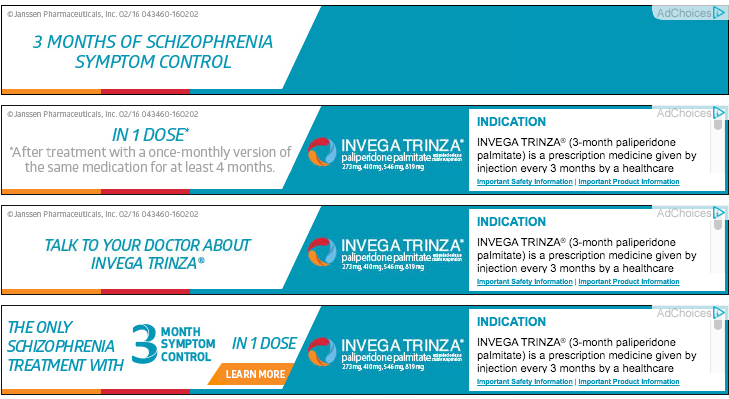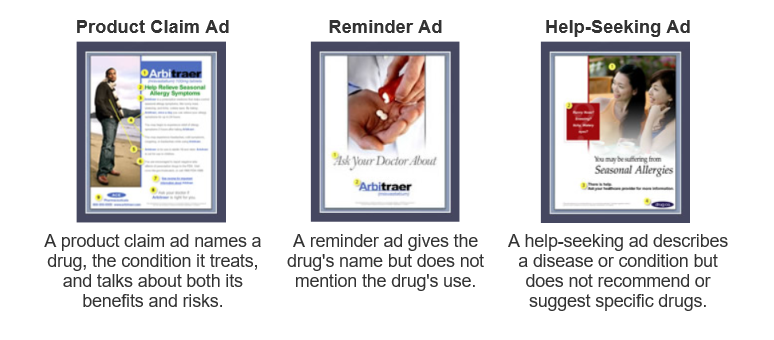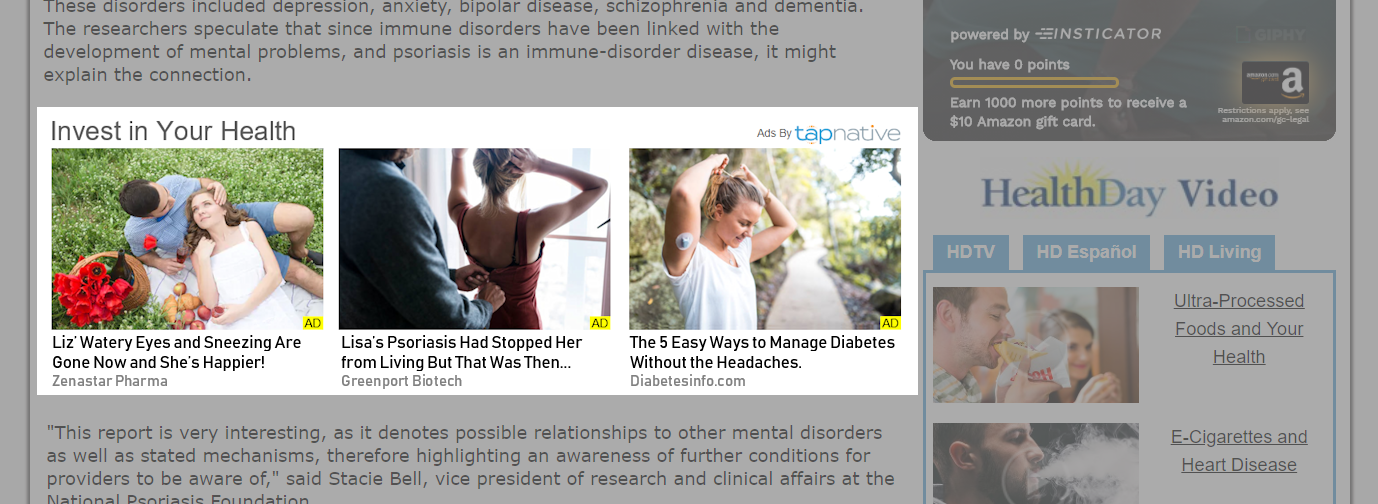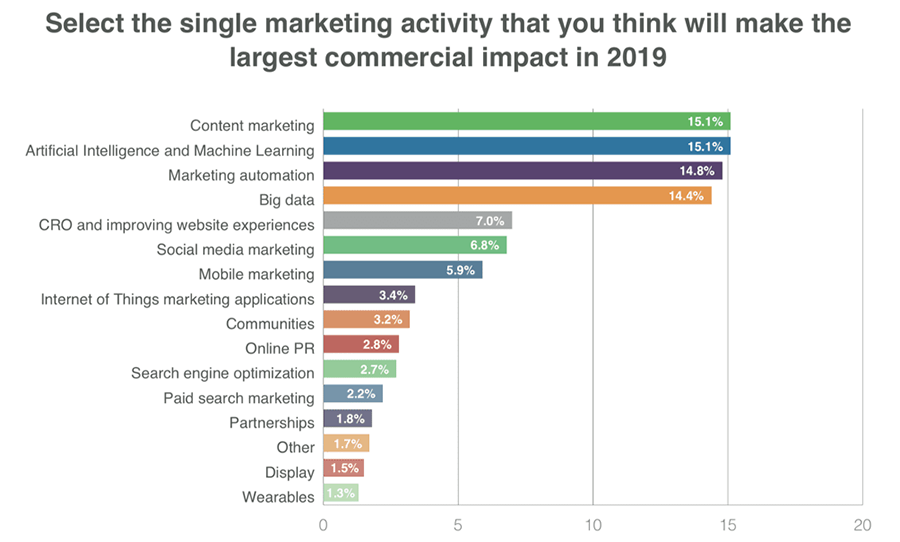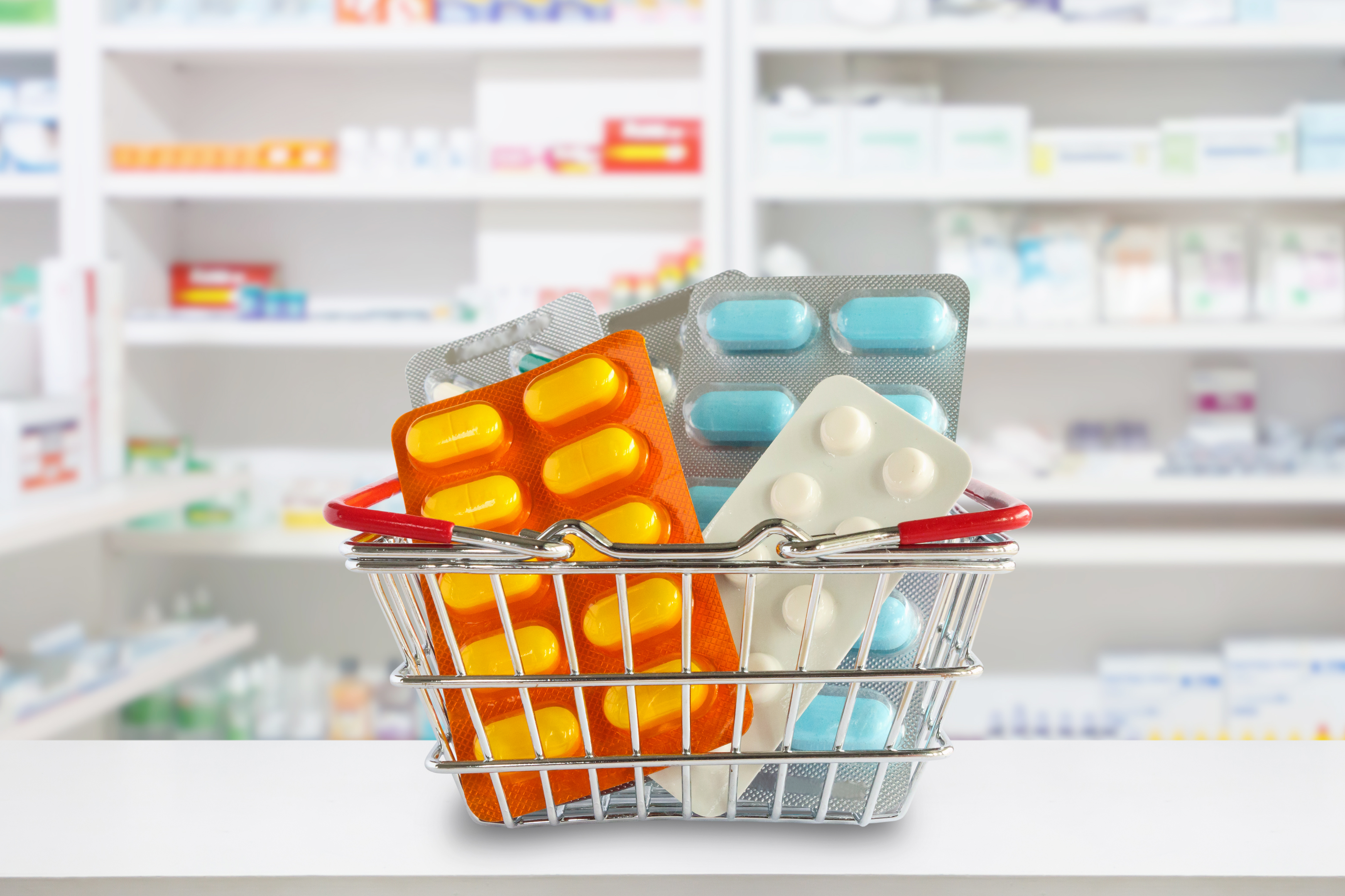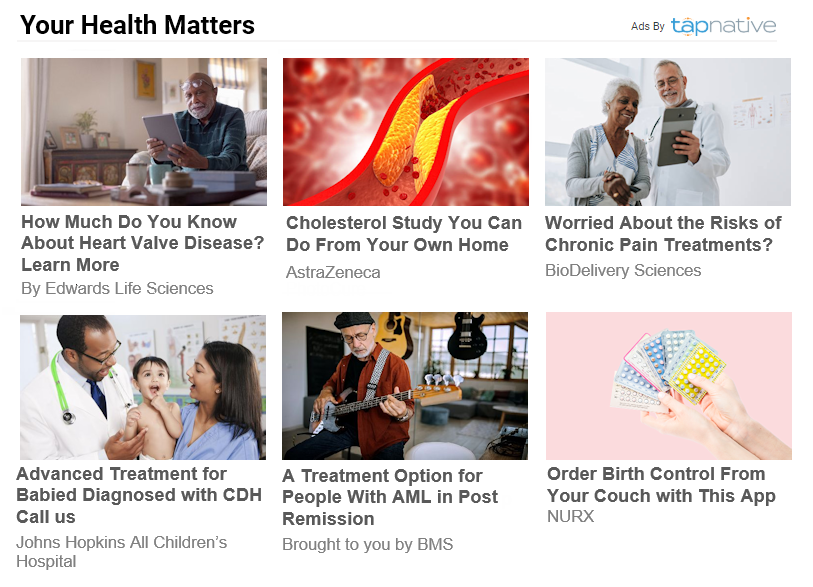Pharmaceutical Native Advertising & Content Marketing
The pharmaceutical industry is highly regulated, and pharmaceutical advertising and marketing is no exception. Therefore, pharmaceutical marketers have taken a cautious approach to all forms of digital advertising.
The FDA requires that mentioning a drug product along with any claims within a Direct-to-Consumer (DTC) advertisement must include "All the risks of using the drug." These disclosures are referred to as "Important Safety Information" or ISI for short. You may recognize these disclosures as scrolling text on a white background. Here’s an example depicting a typical online pharma banner with the ISI on the right side under “INDICATION”, or the condition/disease the drug is approved to treat.

